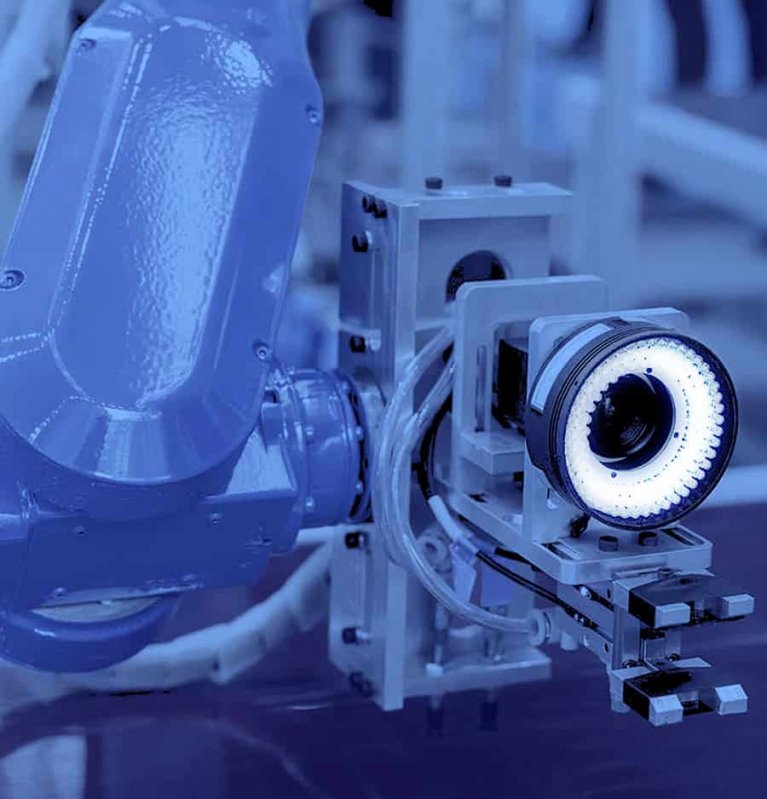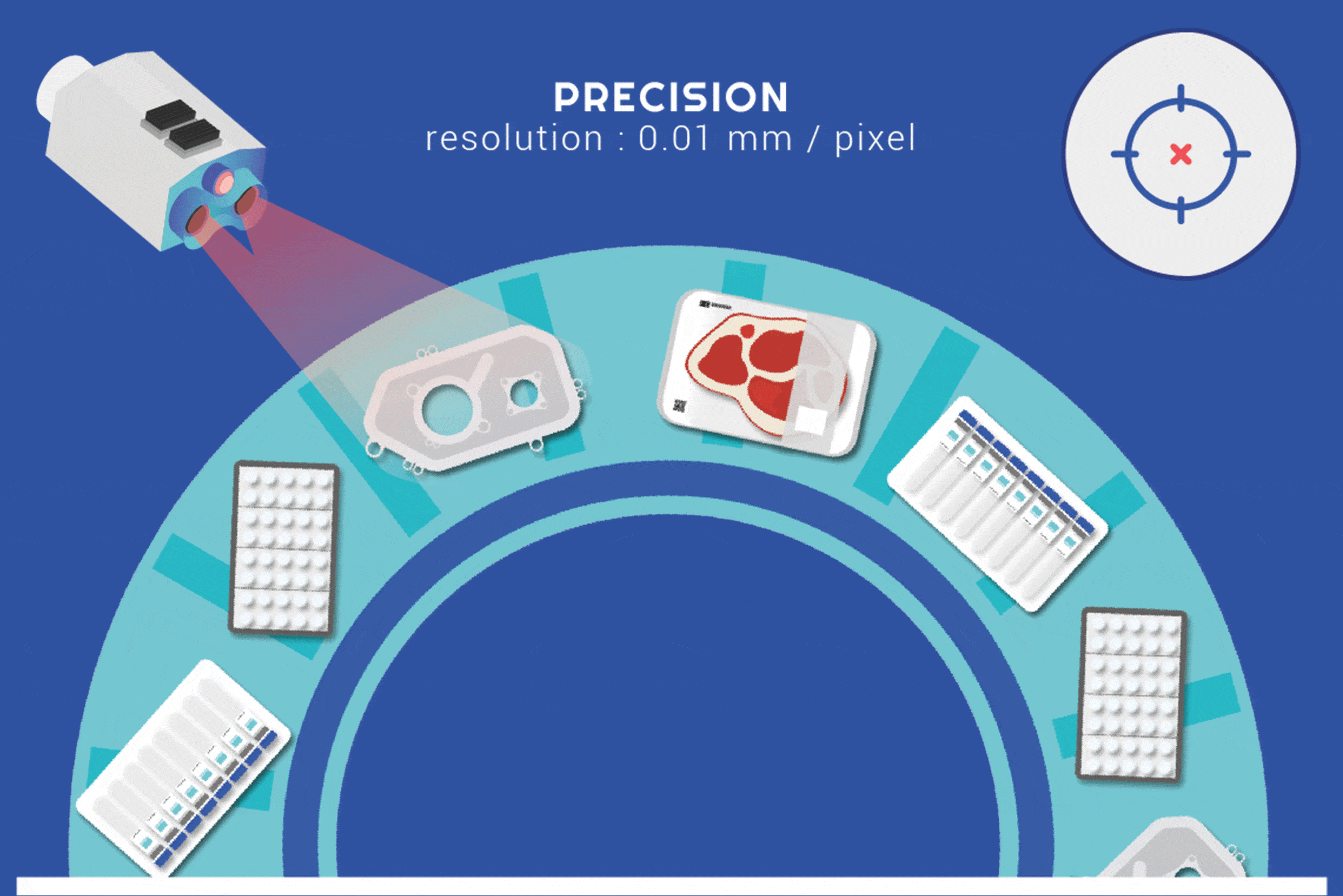
Artificial vision systems are composed of one or more devices which deal with data acquisition, specifically images, and another device, generally a PC, that uses appropriately designed algorithms to receive and analyze the acquired data.
The heart of the vision system consists of one or more cameras and appropriately chosen light sources. The "intelligence" of the system is represented by the vision algorithms, while the management software is essential for interfacing with other systems and operators.
Our vision systems can be integrated within a production cycle, or be installed off-line as stand-alone control machines.

The design of vision systems is extremely flexible, as the choice of the component devices is closely linked to production needs and analysis requirements. There is a wide choice for acquisition and illumination devices.
Depending on the type of analysis, the acquisition can be carried out with multiple instruments. A first classification is given by the light frequency on which the image is to be captured.
Most of vision systems operate in the range of visible electromagnetic radiation (390-750nm). However, many areas such as agri-food, medical, environmental monitoring and security require devices able to "see" in ultraviolet and infrared. Other solutions can work simultaneously with different bands of the spectrum: namely, multispectral and hyper-spectral technologies, which are mainly used in environmental and food areas.

Vision systems are designed develope to perform objective analysis on digitally acquired images and guarantee important advantages:

Vision systems are therefore powerful tools increasingly adopted by companies to ensure precision, reliability and stability of the production process, with the high speed of the automated check for a sure increase in productivity.
The production is also more controlled: each performed analysis is objective and entirely traced and documented. The range of collectable data is very wide and allows a broader view of the production process.
All these features perfectly comply with Industry 4.0 requirements: vision systems are no longer simple good / reject selectors, as they’re able to communicate and interact with other devices. They become also a precious source of data, from which essential information can be drawn to identify the critical parts of a production process. Finally, any drifts can be intercepted to reduce the production of defective parts and avoid damage to machinery.

Vision systems can carry out different types of controls: they can concern dimensional and morphological check of parts, or code reading for alphanumeric codes, barcode, QRCode and similar, and pattern recognition.
Another essential application is production defects control: every type of production must comply with often stringent quality requirements. Defects can be not only aesthetic, but also functional and structural, and therefore crucial for the finished product or the final system for which it is intended.
Vision systems have undeniable advantages for all industrial sectors. To the already mentioned system related strenghts, IMAGO adds its unique Vision, derived from the high competence of the entire company team and an extensive experience in the most diverse sectors. Working closely with different production areas, from automotive and wire drawing to food and biomedical, has ensured us a broad vision, a proven experience and an always practical approach to problems.
It follows that all our products and solutions are conceived with special attention to the end user, as they're basically designed from the operator’s point of view, but also from the manager and maintenance technician’s. We are perfectly aware that quick access and ease of use are other important keys to facilitate the adoption of such powerful tools.
Our vision systems are also constantly updated to fit customer requests, market trends and new technologies, as introduced by our Research and Development department.